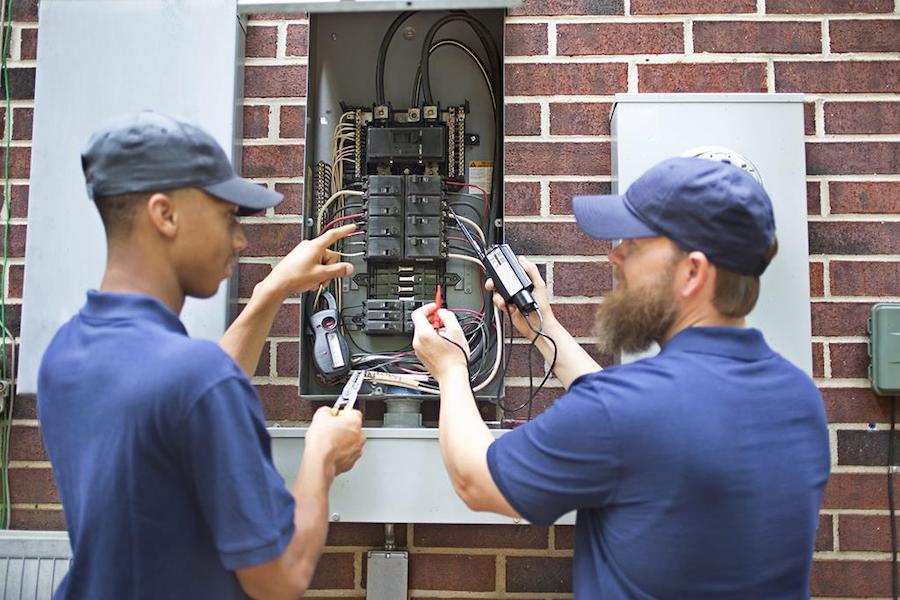Feb 25, 2022
Strategies for Motivating and Retaining Superior Employees
Developing and maintaining a safe and protected workplace is crucial for employee motivation. A blame-free workplace never dismisses accountability but focuses on improving processes rather than blaming individuals. Furthermore, never turn play into work and avoid making incentives addictive. Rewarding an activity will get you more of it, and punishing an activity will get you less of it.
By: John Tooley

When we want to motivate people, the most common thing we do is dangle a carrot in front of them to get more of what we want and use a stick when we want less of something. We use “if-then” statements: “If you do this, then I’ll do that.” If you are a manager of a business in the home performance industry and asking yourself, “How can I better motivate those who work for me?” and you want to know how to have loyal, happy, capable, and proud employees, read on.
The number one question I hear from owners and managers across all the trades is “How can I find and keep superior employees?” It’s difficult and expensive. Having a series of “short-timers” not only erodes the company’s culture but is incredibly expensive. With the inevitable replacement costs, loss of organizational knowledge, loss of productivity, and much more, studies estimate that the average cost of turnover is 90%–200% of the existing employee’s base salary, which can be a large percentage of a company’s operating budget. Retention of good employees is more important now than ever.
A highly motivated workplace culture plays a large part in positive word of mouth by superior employees. We need to create a workplace where our employees will spread the word to their friends. We want that message to be “Our company is the best place to work.” I believe that like begets like. When superior employees give good reports across their social networks, they can help to attract the superior new hires we are looking for.
Common Language
It’s important to have a common language when discussing any subject. So, when I refer to motivation, I define it as the general desire or willingness of someone to do something. By carrots, I mean rewards or incentives dangled in front of employees to motivate them to strive toward some goal. We can give all forms of carrots; however, they should never be used to control. They should be used as a celebration. And by sticks, I mean adverse consequences that decrease the likelihood that the person will do the same thing again. (Yelling, penalties, fines, and taking away privileges are examples of sticks.)
So, what does it take to achieve a highly motivated workplace?
Develop and Maintain a Safe and Protected Workplace
Our employees must feel safe and protected at work to do their best. Developing and maintaining a safe and protected workplace requires that we understand that processes fail more often than people do. When something goes wrong, our first reaction should be to examine how we can improve the process that allowed the problem to arise. In most cases, a company’s owner’s first reaction is “Whose fault was that?” rather than “How can we improve the process that let this happen?” Process-focused companies don’t blame individuals. When things go wrong, process-focused companies blame a poor or missing process. I can hear you thinking, “This can’t be right. There are times when someone really is to blame.” That’s true.
You can divide employees into two groups. The employees in Group A are those who do their work with the intention of doing it right. If they make a mistake, slip, lack training or skills, they are not to blame. We should blame the poor or missing processes that allowed the problems to arise. The employees in Group B are those who do their work wrong on purpose. We all have met these people. They do work wrong knowing how to do it right. They steal from the company or customers; they are the ones who habitually lie, take drugs, and so forth. These employees are blameworthy. They must be dealt with to protect the integrity of our companies. We need to protect our treasured employees from being pulled down by the bad behavior of bad employees. That includes such things as ridicule, bullying, harassment, and any other wrong action that is done with intention.
A blame-free workplace never dismisses accountability. We still need our employees to accept both, knowing that we trust them and will not blame them. We need employees who are both accountable and responsible at the table to help solve problems and improve processes. They know more about what happened than we do. When our employees see that we walk our talk, trust increases, motivation increases, and retention grows.
Never Turn Play into Work
Let me tell you a story. An old man sat on his front porch taking in the warm morning sun. Some children came by and started playing ball in the street in front of his house. The noise disturbed him, so he offered each child a dollar to go play somewhere else. The children excitedly accepted the money and off they went. The next day the old man sat on his porch taking in the warm morning sun. Only minutes later, here come the children playing ball in front of his house. As you can imagine, the old fellow was annoyed. However, he paid each child a dollar once more. On the third day, both the old man and the children were back. This time the old man got mad and told the children to play somewhere else. No sooner were the words out of his mouth than the children demanded payment. “Pay up,” they said, “or we’re not going anywhere.” There are two morals to this story. First, never turn play into work. Second, incentives can become addictive. I’m afraid this holds true in many of our companies.
Over 60 years of science on human behavior have tried to teach businesses how to effectively motivate their employees. As far as I can tell, science has penetrated very little into the business world. Hundreds of years of motivational approaches can be summed up in two statements. Rewarding an activity will get you more of it. Punishing an activity will get you less of it. In fact, this concept of motivation is much older. Five hundred years ago, Niccolò Machiavelli stated, “Might makes right.” The carrot pulls a person toward an outcome, the stick jolts him away. There is the volume of scientific research on what truly motivates us at work. There are three behavior drivers. The first is our biological drive; it is driven from within and consists of hunger, thirst, sex, and sleep. The second is driven from the outside; it consists of rewards and punishments (carrots and sticks). The third is driven from within; it is the joy of the task. This driver is intrinsic motivation. It arises when someone is compelled to act, not because of any external inducement, but because of an internal desire. These employees are ambitious and self-motivated. We have all met them. They are star performers. They love what they do and have no clock. They are driven by a higher purpose within.
Elements of Deeper Motivation Beyond Carrots and Sticks
Our employees are driven by the second and third drivers. Either they are driven primarily by carrots and sticks, or they are self-motivated. Both carrots and sticks work to a limited degree if we are there to administer them frequently. However, carrots and sticks have only short-term impacts because they are used to promote good or discourage unwanted behavior. We should always avoid taking the play out of work. Carrots and sticks should never be used to motivate. The use of carrots could cause harmful competitiveness among employees. The use of sticks could destroy motivation across the company.
In Why We Do What We Do: Understanding Self-Motivation, Edward L. Deci states: “Doing an activity specifically because it leads to a reward, avoidance of punishment, or social approval is external motivation. This approach is pervasive in our society.” He describes how to create a work culture that nurtures the third driver. Deci draws an important distinction between autonomous behavior and controlled behavior. Autonomous behavior is self-motivated behavior. Controlled behavior is externally motivated behavior. Controlled behavior is not an expression of the self, for the self has been subjected to the controls of carrots or sticks, often without realizing it. In 1999 Deci and two colleagues reanalyzed 128 studies published over nearly three decades. Their conclusion: Tangible rewards tend to have a substantially negative effect on intrinsic motivation.
We spend one-third of our time at work, so satisfaction with life is highly dependent upon job satisfaction. In Drive: The Surprising Truth About What Motivates Us, Dan Pink introduces three elements that will increase motivation in any business. These elements are purpose, mastery, and autonomy. Let’s take a look at each one.
Purpose
We must give our employees and those we want to become our employees a clear purpose for doing so. We need to create and deliver a powerful vision that will enable others to join and achieve our purpose. For example, what is Starbucks’s purpose? It’s not about coffee. It’s “To inspire and nurture the human spirit, one person, one cup, and one neighborhood at a time.” Great companies appeal to their employees’ desires to make a difference. What’s Apple’s purpose? It’s not about phones, computers, or tablets. It’s “To challenge the status quo.” Both companies give their employees a purpose greater than themselves. “To make a profit” is often what people answer when I ask them why they do what they do. Profit is a result. The purpose is what motivates action. Our purpose should include everyone in our company, our community, and beyond. Our purpose is something bigger than ourselves. A great book to help with developing our purpose is Start with Why: How Great Leaders Inspire Everyone to Take Action, by Simon Sinek.
I have found that making sure everyone understands our company’s purpose, and why it is bigger than ourselves, is a key component of employee retention. A recent survey of 81,100 U.S. undergraduates found that young people ranked an inspiring purpose as the most desired characteristic in an employer. Other top priorities were job security, work–life balance, and working for a firm with fewer than 1,000 employees.
New research from the iOpener Institute, which analyzed responses from over 18,000 professionals, has shown that the digital generation—Generation Y—values job fulfillment over financial reward. This new analysis provides an important wake-up call for management. We must pay attention to employee feelings of engagement, empowerment, purpose, and future development if we are to retain and foster young talent in our companies.
The authors of the report found that among the best companies to work for, an employee’s belief that his or her “work has a special meaning: this is not ‘just a job’” was the most closely associated with the desire to stay with the company. The next-most important factors were the belief that “I make a difference here,” and the belief that “when I look at what we accomplish, I feel a sense of pride.” This tells us that in a high-trust, high-performance culture, connecting employees to a sense of purpose is closely related to the issue of retention.
Mastery
You need not see what someone is doing
to know if it is his vocation,
you have only to watch his eyes:
a cook mixing a sauce, a surgeon
making a primary incision,
a clerk completing a bill of lading,
wear the same rapt expression,
forgetting themselves in a function.
How beautiful it is,
that eye-on-the-object look.
[W. H. Auden, “Sext”]
Ah, to be in the zone while doing what we love! That beautiful eye on the job to achieve mastery as part of a WAP or home performance crew; as a rater or inspector, lost in the fulfillment of what you are doing. When an hour feels like a minute. When one is inspired from within, time seems infinite. Dan Pink defines mastery as our urge to make progress and get better at what we do. Most of our employees want to master what they do. We must strive to help them reach their full potential. When our employees feel we are dedicated to their professional development, retention rises. Some people say we can’t afford to do that because these trained employees then leave the company. I’m sure you know the answer to that. We are worse off if they stay untrained. We only profit when we help them to develop as superior employees. When we create a development plan with our employees that will increase their value to our company, their intrinsic motivation will increase. We can’t motivate anyone internally; we can only inspire them by our purpose and commitment to their profession and to their personal advancement. In short, if we want to inspire our employees, we must walk the talk. If they feel we are helping them to get better and better, not only will motivation rise but so will retention.
Autonomy
Autonomy is our desire to be self-directed. Carrots and sticks require people to forfeit some of their autonomy. Using carrots and sticks severely limits what each of us can achieve. People need to feel that their actions are self-directed rather than controlled by others. Autonomy doesn’t mean that employees do whatever they want. We must trust our people to be self-directed within the specifications, policies, and procedures of our company or program. The more our employees understand that we trust them, the more they will trust us. Granting employees autonomy will result in deeper motivation and greater retention.
Researchers at Cornell University studied 320 small businesses, half of which granted workers autonomy, and the other half of which relied on the top-down direction. The businesses that granted workers autonomy grew four times as fast as the control-oriented firms and had one-third of the turnover.
Our people must have autonomy, they must have ample opportunity to pursue mastery, and their daily duties must relate to a larger purpose. We need to turn work into play. I have been very blessed. I feel like I have not worked very much in my career. It’s been more play than work. It has not been “just a job.”
This article originally appeared in Home Energy magazine, which is the eJournal’s predecessor publication.





